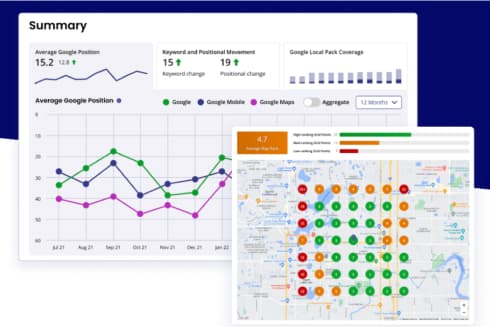Understanding the Power of a CMS
In today’s digital world, content management has become an essential part of any business or individual looking to establish an effective online presence. A Content Management System, or CMS, is a powerful tool that allows you to create, manage, and modify content on a website without the need for advanced technical knowledge.
From its ability to make editing web pages easier to its role in optimizing user experience, the right CMS can transform the way you manage your online content. In this article, we’ll explore what a CMS is, how it works, and why it’s crucial to your digital strategy.
Definition of CMS
A Content Management System (CMS) is a software tool that makes it easy to create, edit, and manage digital content on a website without the need for advanced technical knowledge. CMSs are designed to allow users to manage their website content through a user-friendly interface, eliminating the need for manual coding. This means that anyone, even without programming experience, can effectively update and maintain a website.
One of the most notable aspects of a CMS is its ability to separate content from the website design. This means that users can create and manage content, such as text, images, and videos, independently of the site’s visual design. This separation allows for greater flexibility and makes it easier to update content without altering the website’s design. Additionally, many CMSs offer pre-built templates and themes that simplify the process of designing and customizing the site.
Another key benefit of a CMS is its ability to manage users and permissions. Most systems allow you to assign different roles and access levels to different users, making team collaboration easier. For example, a CMS may allow some users to only edit content, while others have permissions to make changes to the site structure or system settings. This functionality is especially useful for websites with multiple contributors or departments.
Additionally, many CMSs come with a variety of additional features and plugins that can extend their functionality. These plugins can include tools for SEO optimization, social media integration, and e-commerce features, among others. This ability to customize and expand allows a CMS to adapt to the specific needs of each website and business, making it a versatile and scalable solution.
How a CMS Works
A Content Management System (CMS) operates through an architecture that simplifies the management and publishing of web content. Essentially, a CMS is made up of two main parts: the front-end and the back-end. The front-end is the interface that website visitors see and interact with, while the back-end is the administration panel where users manage content.
The back-end of a CMS provides an intuitive environment for creating and editing content. Users can access this dashboard through a web browser, where they will find tools and options for adding new articles, images, videos, and other types of content. The interface is designed to be user-friendly and accessible, allowing users to work with content without needing to write code.
When a user creates or edits content in the backend, the CMS stores this information in a database. This database organizes and manages the content in a structured way, allowing the system to retrieve and display the information efficiently. The content can be text, images, videos, or any other type of file, and is saved in the database along with metadata describing its format and location.
The CMS front-end is responsible for displaying content to website visitors. When a user accesses a page on the site, the CMS retrieves the corresponding content from the database and presents it in the format defined by the selected template or theme. Templates control the layout and appearance of the website, ensuring that content is displayed in a consistent and attractive manner.
In addition to basic content management, many CMSs offer advanced features such as user and permission management, integration with analytics tools, and search engine optimization (SEO). These features allow website administrators to customize their experience and improve site functionality to fit specific business needs.
Key Features of a CMS
- Intuitive User Interface: Provides an easy-to-use platform for creating and managing content, without the need for advanced technical knowledge.
- Separation of Content and Design: Allows content to be managed independently of the website design, facilitating updates and modifications without altering the visual appearance.
- User and Permissions Management: Allows you to assign different roles and access levels to multiple users, facilitating collaboration and control over who can edit and manage different parts of the site.
- Templates Themes: Provides pre-built templates and themes that simplify website design and customization, allowing for a professional look with little effort.
- Database: Stores content in a structured database, facilitating efficient retrieval and presentation of information on the front-end.
- Extended Features: Offers a variety of plugins and extensions that add additional features such as SEO tools, social media integration, and e-commerce functionality.
- Search Engine Optimization (SEO): Includes tools and options to improve the website’s positioning in search engines, helping to attract more traffic.
- Multimedia Support: Allows the inclusion and management of various types of multimedia files, such as images, videos and documents, enriching the content of the site.
- Updates and Maintenance: Facilitates the updating and maintenance of website content in a simple manner, ensuring that the information is always up to date.
- Security: Provides security measures to protect the website and content, including data backup and recovery options.
7 main benefits of a CMS
1. Ease of Use
A CMS is designed to be accessible to users of all experience levels, meaning that no advanced technical knowledge is required to manage a website. The intuitive interface allows users to create, edit, and publish content quickly and easily. With drag-and-drop tools, rich text editors, and pre-built customization options, anyone can manage a website with ease. This ease of use reduces the need to rely on developers or designers for everyday tasks, allowing users to focus on content and digital strategy.
2. Efficient Content Management
One of the main benefits of a CMS is its ability to efficiently organize and manage content. Content management systems allow you to categorize and tag information, making it easier to search and retrieve data. Users can organize content into specific sections and categories, which improves site navigation and user experience. Additionally, CMSs often include tools for post scheduling, allowing you to plan and automate content publishing at strategic times.
3. Flexibility and Personalization
CMSs offer a great deal of flexibility and customization options to tailor a website to a user’s specific needs. Pre-built themes and templates allow for easy design customization, while plugins and extensions add additional functionality. This means that features such as contact forms, image galleries, and online stores can be integrated without having to develop these functions from scratch. This customization capability ensures that the website can evolve over time and adapt to new trends or business requirements.
4. Search Engine Optimization (SEO)
Many CMSs are equipped with tools and features designed to improve search engine rankings. These systems allow the integration of basic SEO practices, such as optimizing titles, descriptions, and friendly URLs. In addition, they often offer SEO-specific plugins that facilitate metadata management, sitemap generation, and integration with analytics tools. With these features, users can improve their website’s visibility in search engines and attract more organic traffic.
5. User and Permission Management
A CMS allows for advanced user and permission management, which is especially beneficial for websites with multiple contributors. Administrators can assign different roles and access levels to users, controlling who can view, edit, or manage different sections of the site. This functionality facilitates team collaboration and ensures that only authorized individuals can make critical changes to site content or settings. Additionally, this permission management helps maintain website integrity and security.
6. Multimedia Support
The ability to handle multimedia content is another great benefit of a CMS. These systems allow users to upload and manage a variety of file types, such as images, videos, and documents. Integrating and presenting these files is made easy, allowing you to enrich your website content with engaging visuals and multimedia. Additionally, many CMSs offer tools for image optimization and multimedia file management, which helps improve website performance and speed.
7. Safety and Maintenance
Security and maintenance are critical aspects of website management, and CMSs offer effective solutions to address these challenges. Content management systems typically include built-in security features such as user authentication and protection against common attacks. Additionally, CMSs offer options for website backups and restores, ensuring that content is protected from loss or damage. Regular system updates are also easily managed through the CMS, keeping the website up to date with the latest security patches and improvements.
How to Choose a Suitable CMS
Choosing the right Content Management System (CMS) for your website can be crucial to its success and efficiency. With so many options available, it’s important to consider several key factors to ensure the CMS you choose fits your specific needs and goals.
1. Evaluate Website Needs
Before selecting a CMS, it’s critical to evaluate your website’s specific needs. What type of content will you be publishing? Do you need advanced features like e-commerce, forums, or social media integration? Consider the size and complexity of the site you want to build. A simple blog website may require a less complex CMS than an e-commerce site with multiple products and features. Determining your needs will help you select a CMS that offers the features and flexibility to meet your requirements.
2. Review Ease of Use
Ease of use is a crucial aspect when choosing a CMS, especially if you or your team don’t have a technical background. Opt for a CMS that offers an intuitive interface and friendly tools for non-technical users. Check out the documentation, tutorials, and support resources available for the CMS. The ease with which you can manage and update your content will impact the efficiency of your day-to-day website management. A CMS with a low learning curve will allow you to focus on content rather than technology.
3. Consider Flexibility and Scalability
It’s important that the CMS you choose is flexible and scalable, especially if you plan to grow your website over time. Make sure the CMS allows for customization through themes and plugins, and can adapt to future changes in your needs. Check to see if the CMS offers options to extend functionality through plugins or additional modules. This flexibility will ensure that you can add new features and adjust the website as your business or goals evolve.
4. Evaluate Support and Community
Good support and an active community are key to solving problems and getting help when needed. Research whether the CMS you are considering has an active community of users and developers, as well as available technical support. An active community can offer valuable resources, such as discussion forums, tutorials, and extensions. Also, check the quality of the CMS’s customer support, whether through live chat, emails, or phone calls.
5. Review SEO Options
Search engine optimization (SEO) is crucial to driving traffic to your website. Make sure the CMS you choose includes features and tools to improve SEO. Look for options to customize title tags, meta descriptions, friendly URLs, and other SEO-important elements. Also, check for the availability of SEO-specific plugins or modules that can offer additional functionality, such as sitemap generation and integration with web analytics tools.
6. Consider Safety
Security is a critical aspect when choosing a CMS. Research the security features offered by the CMS, such as user authentication, protection against common attacks, and regular security updates. A CMS that is frequently updated and offers options for backup and restore management can help protect your website against vulnerabilities and data loss.
7. Evaluate the Total Cost
Finally, consider the total cost associated with the CMS, including licensing, add-ons, maintenance, and potential support costs. Some CMSs are free and open source, but may require investments in premium add-ons or support services. Other CMSs may have licensing or subscription costs. Evaluate your budget and make sure the CMS you choose offers a good balance between cost and functionality, according to your needs and resources.
How to Migrate Your CMS: A Step-by-Step Guide
Migrating a CMS can be a complex process, but with proper planning, you can do it effectively and smoothly. Here is a step-by-step guide to help you successfully migrate your content management system.
1. Planning and Evaluation
Before you begin the migration, it’s essential to plan and evaluate the process. First, take a complete inventory of all of your website’s current content and functionality. This includes pages, posts, images, videos, and any relevant data. Also evaluate the functionality your site uses, such as forms, integrations, and plugins. This assessment will help you identify what aspects need to be replicated in the new CMS and detect potential issues that may arise during the migration.
2. Selecting the New CMS
Choose the new CMS that best suits your needs and goals. Make sure that the new system can support all the functionality and features that your current website offers. Research the available options, review the features of each CMS, and choose the one that provides the necessary flexibility and scalability. It is critical that the new CMS has the ability to handle your content efficiently and fits the technical and design requirements of your site.
3. Setting up the New CMS
Once you’ve selected your new CMS, proceed to configure it. Install the CMS in the staging environment and configure basic settings such as the necessary themes, templates, and plugins. Make sure the new CMS is ready to receive the content and functionality of the old site. Also configure security, SEO, and any other settings crucial to the site’s operation. It’s a good idea to do thorough testing in this environment to make sure everything is working properly before the final migration.
4. Content Migration
Content migration is one of the most critical parts of the process. There are several ways to migrate content, which can include import/export tools provided by CMSs, custom scripts, or manual migrations. Make sure to transfer all content elements, including text, images, videos, and files. Check that URL structure and internal links are maintained, to avoid issues with site navigation and SEO. Perform thorough testing to ensure that all content has been migrated correctly.
5. Testing and Validation
Before making the website live, perform thorough testing to validate that all content and functionalities are working as expected on the new CMS. Check that pages load correctly, forms work, internal links are active, and integrations are operational. Make sure the website is compatible with different devices and browsers. Perform performance and security tests to identify and fix any issues before the final launch.
6. Redirection and SEO
After migration, it is crucial to implement redirects to ensure that old URLs are correctly redirected to the new ones. This will prevent 404 errors and help maintain the site’s SEO ranking. Update the sitemap and submit it to search engines to ensure proper indexing of the new site. Monitor site traffic and performance to identify and fix any SEO or navigation-related issues.
7. Maintenance and Support
Finally, after migration, make sure to provide ongoing maintenance and support. Regularly monitor the site to identify and fix any issues that may arise. Keep the CMS and its plugins up to date to ensure the site’s security and optimal performance. Provide training to users if necessary, to ensure they can effectively manage content on the new CMS.
Differences between CMS, WCM, ECM, DAM and DXP
The world of digital content management is full of terms and acronyms that can seem confusing at first. However, each of these systems has a specific purpose and functionality that makes them unique. Here we explore the key differences between CMS, WCM, ECM, DAM, and DXP.
1. CMS (Content Management System)
A Content Management System (CMS) is a platform that allows users to easily create, edit, manage, and publish digital content. CMSs are primarily designed for managing web content such as articles, blogs, and information pages. Popular examples of CMSs include WordPress, Joomla, and Drupal. CMSs focus on making it easy to create and update content without requiring advanced technical knowledge, making them ideal for bloggers, small businesses, and organizations that want to efficiently maintain their online presence.
2. WCM (Web Content Management)
WCM, or Web Content Management, is a specific category within CMS that focuses exclusively on managing content for websites. While all WCMs are CMSs, not all CMSs are WCMs. WCM systems offer advanced tools for web publishing, including workflow management, real-time collaboration, and personalization of content for different audience segments. WCMs are designed to handle large amounts of content and to support complex websites with multiple languages, regions, and users. Examples of WCMs include Adobe Experience Manager and Sitecore.
3. ECM (Enterprise Content Management)
Enterprise Content Management (ECM) is a broader approach that encompasses the capture, storage, management, and delivery of digital content across an organization. ECM systems are designed to handle a variety of content types, including documents, emails, images, and digital records. In addition to web content management, ECMs offer advanced functionality such as records management, regulatory compliance, and business process automation. ECM systems are primarily used by large organizations that need to manage large volumes of information and ensure its security and accessibility. Examples of ECMs include IBM FileNet and OpenText.
4. DAM (Digital Asset Management)
Digital Asset Management (DAM) focuses on the management of media files such as images, videos, graphics, and digital documents. DAM systems are designed to efficiently store, organize, and distribute digital assets. They offer features such as metadata tagging, advanced search, rights management, and version control. DAMs are essential for organizations that handle large amounts of media content and need to ensure its accessibility and proper use. Examples of DAM systems include Widen and Bynder. Unlike CMSs and ECMs, DAMs are highly specialized for media asset management and typically do not include functionality for managing web content or enterprise documents.
5. DXP (Digital Experience Platform)
Digital Experience Platforms (DXPs) represent an evolution of WCMs and ECMs, integrating multiple technologies to deliver personalized and cohesive digital experiences to users. DXPs go beyond simple content management, providing tools for personalization, data analytics, application integration, and marketing campaign management. These platforms enable organizations to deliver omnichannel digital experiences, spanning websites, mobile apps, social media, and more. Examples of DXPs include Salesforce Experience Cloud and Liferay. DXPs are ideal for companies looking for a comprehensive solution to manage and optimize all digital interactions with their customers.
The Best CMS on the Market
In the field of content management, there are several systems that stand out for their popularity, functionality and flexibility. Below, we explore some of the best CMS on the market, which have gained recognition for both their ease of use and advanced capabilities.
WordPress
WordPress is undoubtedly the most popular and widely used CMS in the world. Originally designed as a blogging platform, WordPress has evolved to become a powerful tool for creating all kinds of websites, from personal blogs to large news portals and e-commerce sites. Its popularity is largely due to its intuitive interface, its large number of themes and plugins, and an active community that offers ongoing support and development. WordPress is ideal for both beginners and advanced developers thanks to its flexibility and scalability.
Joomla
Joomla is another well-known CMS, known for its balance of ease of use and advanced functionality. It offers a wide range of built-in features, including user management, multimedia content management, and extensions to add new functionality. Joomla is especially popular among developers and businesses that need a robust solution that can grow and adapt to their specific needs. Its templating system and customization options allow for creating visually appealing and highly functional websites.
Drupal
Drupal is known for its power and flexibility, and is the preferred CMS for complex, high-traffic websites. It offers a modular architecture that allows developers to build and customize advanced functionality. Drupal is highly scalable and can handle large amounts of content and users simultaneously, making it ideal for large organizations, government institutions, and e-commerce sites. Although it may have a steeper learning curve than WordPress or Joomla, Drupal rewards with a high level of control and customizability.
Magento
Magento is a specialized e-commerce CMS, known for its powerful product management, marketing, and analytics tools. It offers extensive flexibility and customization, allowing online store owners to create unique and optimized shopping experiences. Magento supports multiple stores, multiple languages, and multiple currencies, making it ideal for businesses that operate globally. Although it can be more complex to set up and manage than other CMSs, Magento is the preferred choice for businesses that need a robust and scalable e-commerce platform.
Shopify
Shopify is a cloud-based eCommerce CMS solution, noted for its ease of use and quick setup. It is designed to make it easy for non-technical users to create and manage their online stores. Shopify offers a wide range of customizable themes and apps that extend its functionality, including marketing, SEO, and analytics tools. Its secure platform and 24/7 support make it ideal for small and medium-sized businesses looking for a simple yet powerful eCommerce solution.
Squarespace
Squarespace is a CMS platform that stands out for its sleek design and ease of use. It’s especially popular with creatives and small businesses who want a visually appealing website without the need for advanced technical knowledge. Squarespace offers a variety of modern templates and drag-and-drop tools, making it easy to create stunning websites. Although it may be less flexible in terms of advanced customization compared to other CMSs, its focus on design and usability makes it ideal for those who prioritize aesthetics and simplicity.
Wix
Wix is another cloud-based CMS platform that has gained a lot of popularity thanks to its intuitive drag-and-drop editor. It is ideal for users who want to create websites quickly without any coding skills. Wix offers a wide range of templates and apps that allow for customizing and expanding website functionalities. While it may not be as robust as WordPress or Joomla for larger or more complex websites, Wix is perfect for small businesses, freelancers, and individuals looking for an easy and affordable solution to creating a professional website.
Why Businesses Should Adopt a CMS
Adopting a Content Management System (CMS) is a crucial strategic decision for any company looking to improve its digital presence and optimize its content management. A CMS makes it easy to create, edit and publish content, allowing companies to keep their website up-to-date and relevant without the need for advanced technical knowledge.
Furthermore, the customizability and scalability of CMS ensures that the website can grow and adapt as the business needs do. The integration of advanced functionalities such as SEO, analytics, and e-commerce tools provides businesses with a competitive advantage by improving operational efficiency and user experience. In an increasingly digital world, adopting a CMS is essential for any business that wants to stay relevant and competitive in the market.












